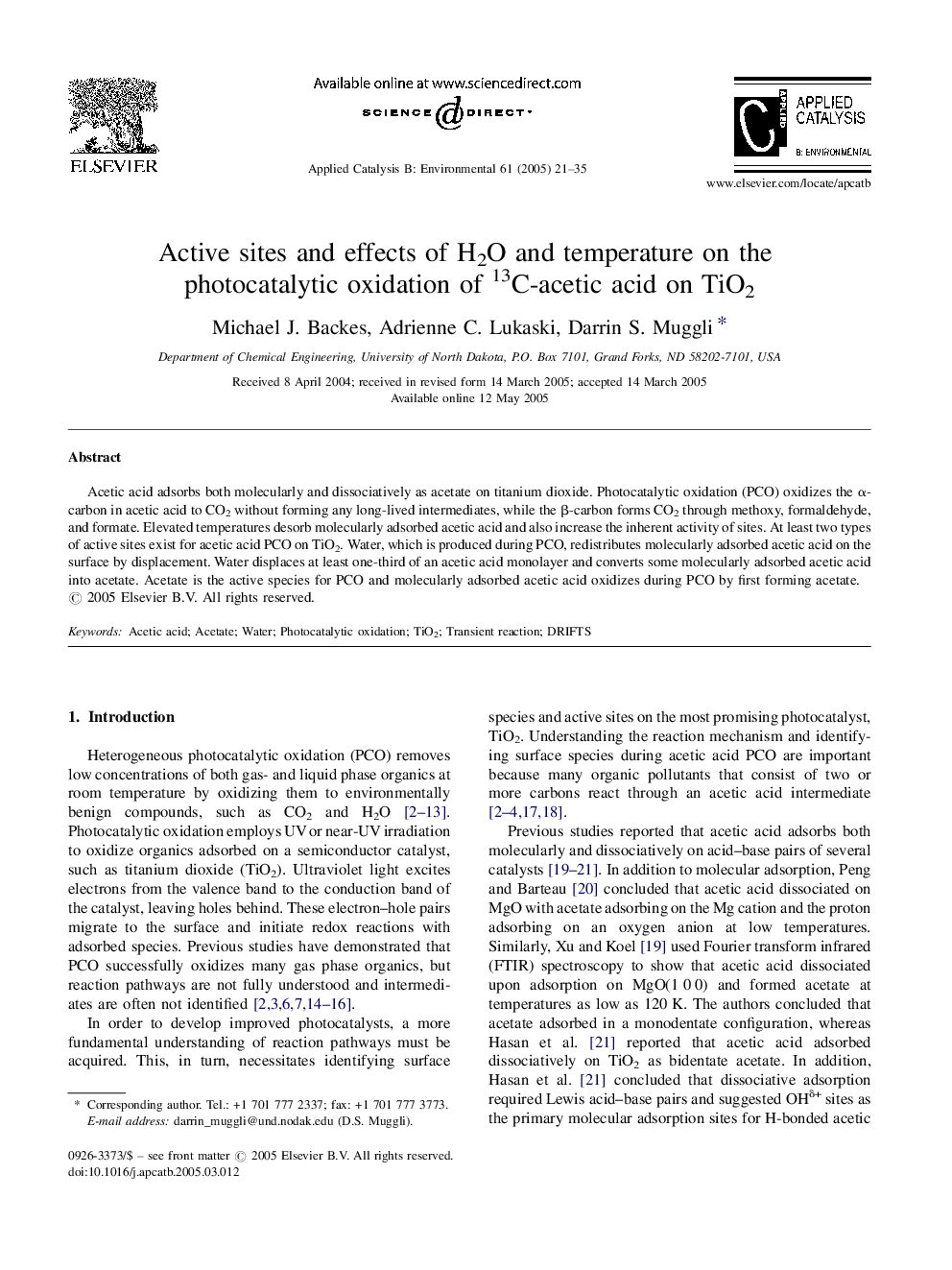| Article ID | Journal | Published Year | Pages | File Type |
|---|---|---|---|---|
| 9609777 | Applied Catalysis B: Environmental | 2005 | 15 Pages |
Abstract
Acetic acid adsorbs both molecularly and dissociatively as acetate on titanium dioxide. Photocatalytic oxidation (PCO) oxidizes the α-carbon in acetic acid to CO2 without forming any long-lived intermediates, while the β-carbon forms CO2 through methoxy, formaldehyde, and formate. Elevated temperatures desorb molecularly adsorbed acetic acid and also increase the inherent activity of sites. At least two types of active sites exist for acetic acid PCO on TiO2. Water, which is produced during PCO, redistributes molecularly adsorbed acetic acid on the surface by displacement. Water displaces at least one-third of an acetic acid monolayer and converts some molecularly adsorbed acetic acid into acetate. Acetate is the active species for PCO and molecularly adsorbed acetic acid oxidizes during PCO by first forming acetate.
Related Topics
Physical Sciences and Engineering
Chemical Engineering
Catalysis
Authors
Michael J. Backes, Adrienne C. Lukaski, Darrin S. Muggli,
